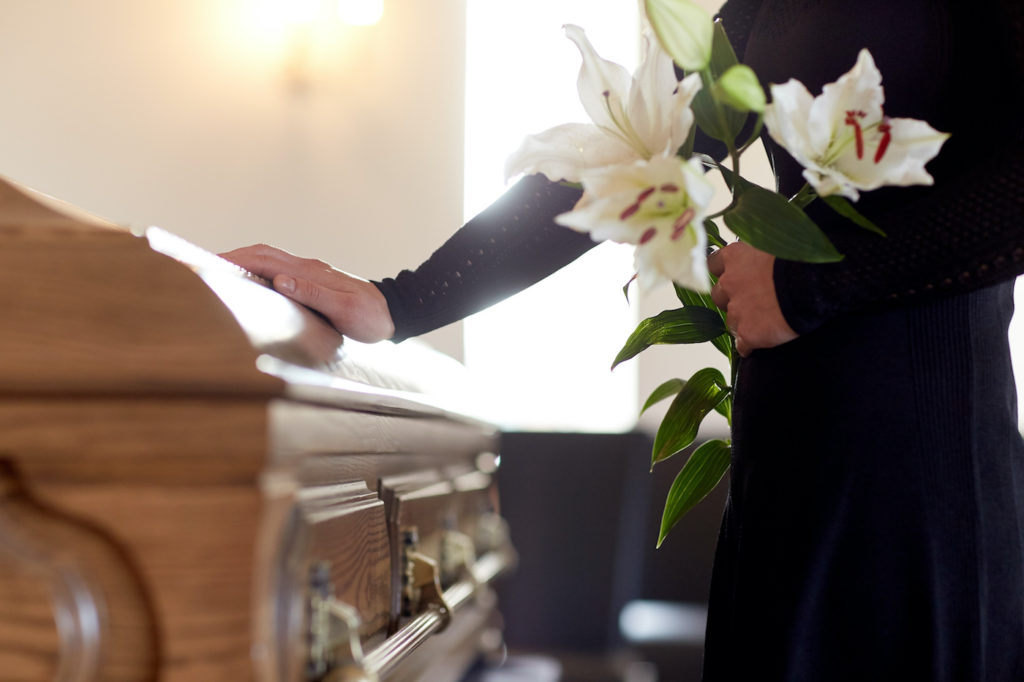Qohelet, the anonymous preacher who authored the book of Ecclesiastes, writes with the confidence of a travel-wearied person. He is aged, disillusioned, and cynical. For Qohelet, disillusionment isn’t something we should shun: it literally means freedom from illusion. Trials, errors, and failure enable us to perceive reality more clearly. Serious suffering can be unbearable, but it also cleanses us of self-delusion.
Modernity shields us from such agony. Our social order—which prizes consumption, entertainment, and diversion—is designed to interrupt our experience of raw reality. Ecclesiastes shows that one kind of suffering, mourning, is a necessary corrective to illusions, which abound in modern life.
King Solomon, the attributed author of Ecclesiastes, has the ideal biography to anticipate Ecclesiastes’ teachings. He was spoiled, sensual, and shrewd. He lived in obscene extravagance with 700 wives and 300 concubines. In the end, nothing satisfied him. The outcome of his revelry was disillusionment. Or to use his words, it was all meaninglessness and vanity, everything under the sun.
Solomon learns that reality is preferable to fantasy because fantasy is empty. This is why he writes: “It is better to go to a house of mourning than to go to a house of feasting, for death is the destiny of everyone; the living should take this to heart.”
Start your day with Public Discourse
Sign up and get our daily essays sent straight to your inbox.The phrase house of mourning (bêt-ʾēbel) is not used in the Hebrew Bible again, but it does occur in the Mishnah and Talmud. There, we learn that a house of mourning is a place where people gather to mourn the deceased, share meals, and comfort loved ones. In a house of mourning, death is not sanitized, sequestered, or swept away from sight. It provides a place to grapple with death, something most people lack today.
Our social order—which prizes consumption, entertainment, and diversion—is designed to interrupt our experience of raw reality.
Deprived of Death
In the modern world, the dying person is deprived of his death, and mourners are deprived of their mourning because death is made nearly invisible. Prior to World War I, Philippe Ariès reminds us, the shutters of the dying person’s window were closed, candles were lit in the house, and the whole community gathered—family, friends, and neighbors, whispering in hushed tones. When the person died, the church bells tolled, and a notice of death was placed on the front door. Now death takes place in a hospital and is removed from social spaces. Being shielded from death, we are left unprepared for it when it inevitably arrives.
We rarely need to enter a house of mourning, and when we do, we can quickly move on. We can occupy ourselves with endless diversions: self-help, volunteering, traveling, renovating a kitchen (or for the less daring, watching a show about renovating a kitchen). Contemporary life’s list of possible activities is endless. If one diversion grows boring, we can always surf with a click, tap, or swipe, which gives yet more options. Optionality is what it means to be postmodern, a point that Thomas de Zengotita made nearly twenty years ago in his book, Mediated: How the Media Shapes and the Way You Live in It.
Beneath these endless attempts to mask death is the unreality of them all. The hyperreal—an exaggeration of the real—surrounds us. The real cannot compete with the hyperreal because the latter’s abstracted perfection proves irresistible in the face of reality’s inevitable limitations. Johann Joachim Winckelmann, the great eighteenth-century German art historian, made this point when he noted that Greco-Roman sculptures exceeded reality, an observation that was not lost on the Greeks themselves. Isocrates once said, “[N]o one can make the nature of his body resemble molded statues and portrait paintings.” According to Winckelmann, it is this quality of exaggeration that makes these sculptures timeless and prized.
The real cannot compete with the hyperreal because the latter’s abstracted perfection proves irresistible in the face of reality’s inevitable limitations.
Hyperreality’s Delusions
Winckelmann anticipated our day with uncanny precision. In a world saturated with the media, the hyperreal has created a new culture defined by new tastes and standards. While sculptures and other art typically portray the hyperreal as something transcendent, mysterious, and removed from ordinary life, mass media cheapens hyperreality into ubiquitous entertainment for consumption. How can a person who grew up watching Star Wars ever view space in the same way? A new launch of a rocket into orbit is no longer awesome, but Beskar (the fictional stuff of Mandalorian armor) is. In this regard, it is not even hyperreal; it is pure simulacrum. Or how can a person who has grown up around plastic surgery, airbrushing, photoshop, and Botox ever appreciate beauty that is rooted in reality? Has our sense of beauty been altered forever? Likewise, can we ever feel anything genuine when we have imbibed hundreds of thousands of hours of screen time?
In these virtual and physical settings that dominate our common spaces, it’s easy to become intoxicated by the endless spectacles and enticements these settings provide.
As I write, I am sitting in the heart of downtown Chicago, nowhere less than Michigan Avenue, dubbed the Magnificent Mile. As I look around, it is magnificent, the hyperreality—towers rising into the sky, luxury shops as far as the eye can see, and people walking leisurely to see and to be seen. The whole stretch is a house of feasting, and it makes you feel important and invincible. Hugo Boss reminds you that you are in charge, Under Armour suggests you are invincibly strong, and Pandora promises pleasures for those who are curious enough to open its doors. Chicago is no different from my hometown, New York City. It is the same hyperreal house in a different location.
Building New Houses of Mourning
In these virtual and physical settings that dominate our common spaces, it’s easy to become intoxicated by the endless spectacles and enticements these settings provide. Houses of mourning can help us return to sobriety by creating space for death in our existential calculus. These houses show that optionality has limits. There the buzz of feasting wears off, and sober-mindedness begins to settle in. Houses of mourning allow us to see hyperreality for what it is: fake. They enable us to begin asking questions beneath life’s surfaces and become seekers, not just consumers.
Solomon lived at the peak of Israel’s glory. He had few worries. How different from his father who lived in caves, out of sight from a murderous king who wanted his head. David did not have to walk into a house of mourning because he lived in one. Solomon, on the other hand, was enthroned in a house of feasting. At one point, he realized that if he wanted something more, something real, he had to dwell in a different house. Herein lies the challenge. He is like many of us today, living in advanced economies. Options. Most of us are more Solomon than David. The question is what will we do? Where will we go?
We are still living through a pandemic, and many of us are suffering or have suffered. Options have been diminished even for those with means. If Ecclesiastes 7:2 is correct, we would do well to dwell in the reality of suffering a bit longer. Why? Because we would learn that we are finite, limited, and bound beings—no matter how much we exaggerate and stretch.
Only after we see these realities can we begin to order our lives and loves. We become more human not when we imagine we have endless options, but when we accept our limitations and still choose to make the most, be the best, and serve the least. This medicine is bitter, but our humanity can shine only when it’s rooted in reality.













